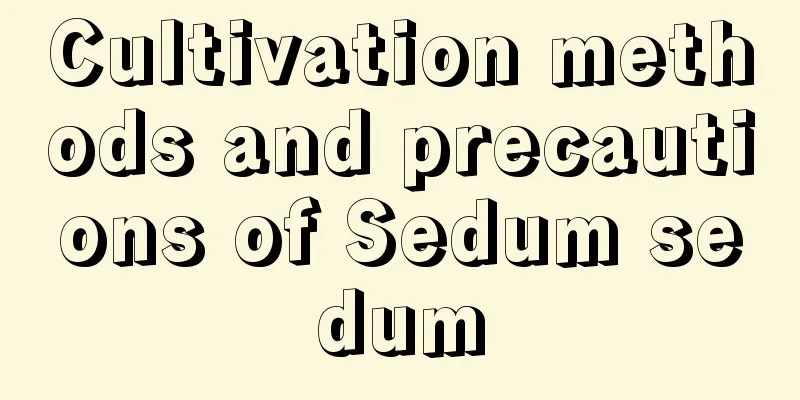The cultivation method and precautions of Epimedium

1. Growth habitsFirst of all, it is a plant that prefers a cool environment, so light can be present, but it must not be too strong, especially direct sunlight at noon in summer. In addition, it needs water, but it is also afraid of waterlogging, so the water supply needs to be strictly controlled. Then there is the issue of fertility. Relatively speaking, it has a relatively high demand for fertilizer. There are also treatments such as loosening the soil and weeding. 2. Specific methodsLighting: Normal astigmatism is acceptable. If it is planted in the woods, you can trim the crowns of nearby trees or build a shed. If it is grown in bare ground, you can also build a pergola, plant other crops next to it (corn, sunflowers, etc.) or take other shading measures. One to two-year-old plants have weaker light resistance, so it is better to control the canopy density at 0.6 to 0.7; three to four-year-old plants are slightly stronger, so it is sufficient to control it at 0.4 to 0.5. Water: Generally speaking, the moisture content of the soil should be controlled within the range of 20 to 30 percent. If it is less than 15%, irrigation can be carried out; if it is greater than 30%, drainage must be carried out. Especially during the rainy season, drainage is particularly important. Fertilizer: Foliar fertilizer can be applied in the first year after transplanting, once after the leaves unfold and once during the green fruit stage. The treatment is different after the second year of transplanting. In addition to foliar fertilization, root side fertilizer is also required. Soil loosening and weeding: It needs to be done three times a year, the first time is after the seedlings emerge, the second time is in early June, and the third time is after the seeds are collected. 3. NotesWhen applying fertilizer, you need to be careful not to add just one nutrient but to take comprehensive care. |
<<: Cultivation method of water lily
>>: Taboos on growing pine red plum in winter
Recommend
How long does it take for a fragrant lily to bloom? How long does it take from planting the bulb to blooming?
How long does it take for the fragrant lily to bl...
Who can't grow Clivia?
1. People with a quick temper Clivia has high req...
How to cultivate Oncidium
Oncidium is a popular orchid with a lightweight p...
Purple sweet potato's growing environment and local conditions
Purple sweet potato growth environment and condit...
Rose bud grafting steps
1. Time Selection The most suitable season for bu...
What is Pu Cai?
What is Pu Cai? Cattail is the tender pseudostem ...
Cultivation method of claw leaf chrysanthemum
1. Breeding methods 1. Sunlight: Clawleaf Chrysan...
The difference between yellow cicada and soft-branch yellow cicada
1. Difference of blades The leaves of Huangchan a...
Put a pot of it on the New Year's table, your career will be more prosperous and your body will be healthier!
Put it in a pot on the desk, it is elegant and no...
Open-air cultivation technology of Qilin watermelon
Kirin watermelon is a high-quality fruit that is ...
Can hawthorn trees be planted in pots?
Can hawthorn trees be planted in flower pots? Haw...
How to propagate carnations by cuttings (with illustrations of the steps)
1. Time Selection The timing for carnation cuttin...
Don’t give away these “4 types” of trees easily, as they become more expensive as they get older, and their prices will keep rising!
Sometimes we think that after caring for a plant ...
Bayberry planting conditions and regional climate suitable for growth
Planting conditions for bayberry Bayberry is suit...
Is it better to grow green radish in a tall or short pot? Is it better to grow it in a large or small pot?
The requirements of the flower pot for the green ...









